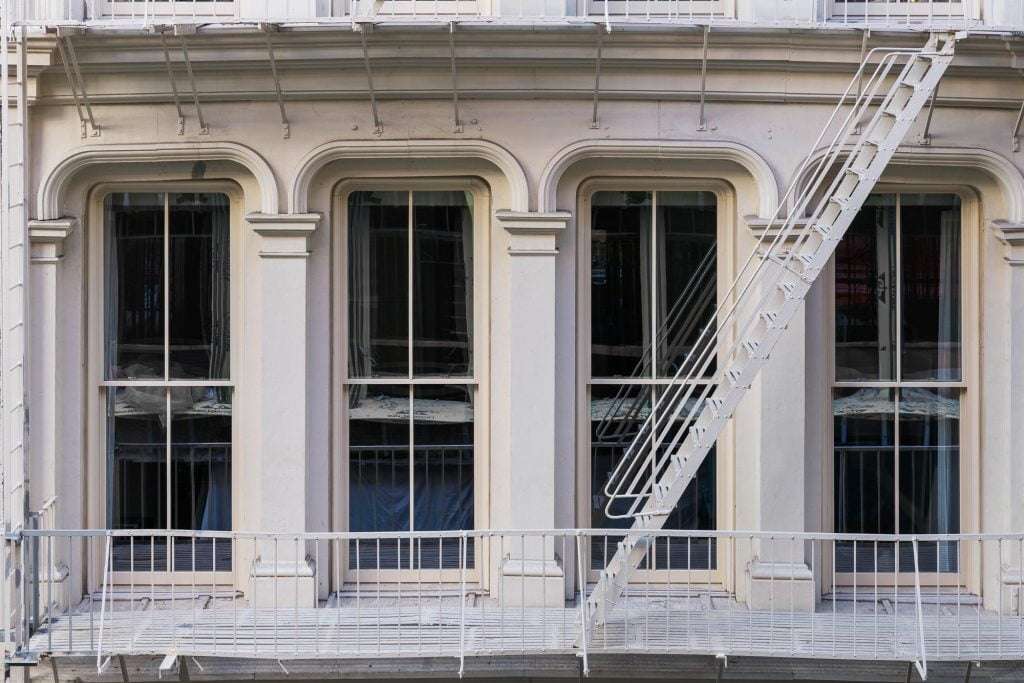
For over 14 years, Open AWD has been trying to right this wrong by supplying first-class Double-Hung Windows to homeowners and architects seeking to restore landmark projects to their original beauty.
The United States is a country where landmark buildings are highly esteemed yet it’s not uncommon to see neglected brownstone townhouses scattered throughout New York, Boston, or San Francisco.
Take, for example, an old townhouse in Brooklyn Heights. The owner is tired of drafts and leaks, and they would like to replace them. No element of renovation – or even construction – is harder than choosing which windows are right for your home, and there is much to consider.
In many towns and cities, there are areas where double-hung windows are required due to each city’s historic zoning regulations. In many cases, only double-hung windows are permitted, and local landmark commissions strictly enforce this. It is crucial to understand your local zoning regulations before ordering anything.
Windows and doors on the front facade should be designed to complement the architecture of the building and the surrounding subtly and effectively. You can read more on some design options for double-hung windows below.
To explore more about New York Landmark Preservation Movement and Our Landmark Projects follow the link
True Double-Hung WIindow
The original design and functionality, combined with the modern capabilities of the IGU double-circuit seals and hardware, are both classic and modern.
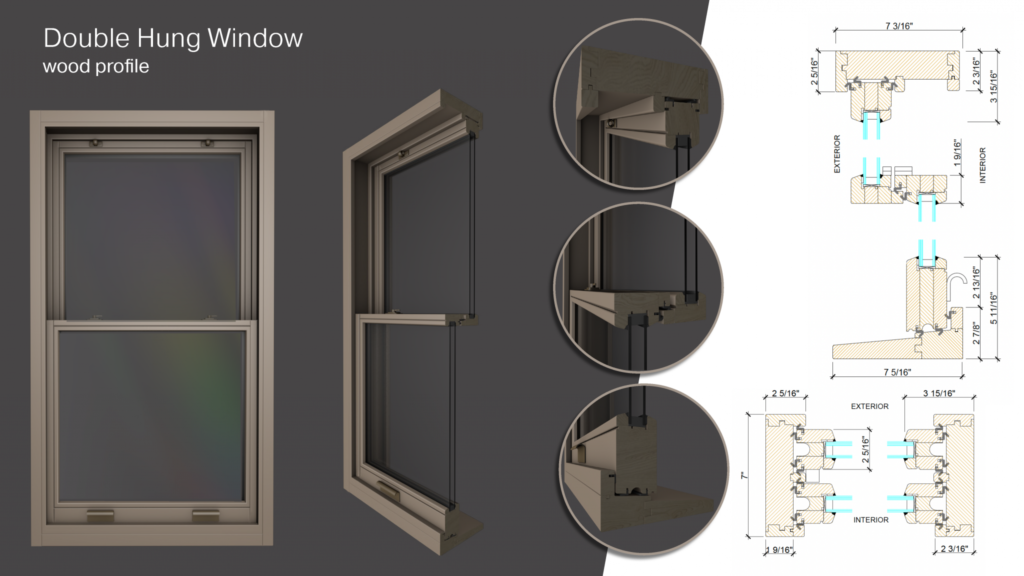
Single-Hung Window
Based on our opinion and our research, people often only use the lower sash. As a result, if the upper sash is rarely used, a single-hung window is a much better idea. In terms of soundproofing and energy efficiency, it will require less hardware and, as a result, will come with a lower price.
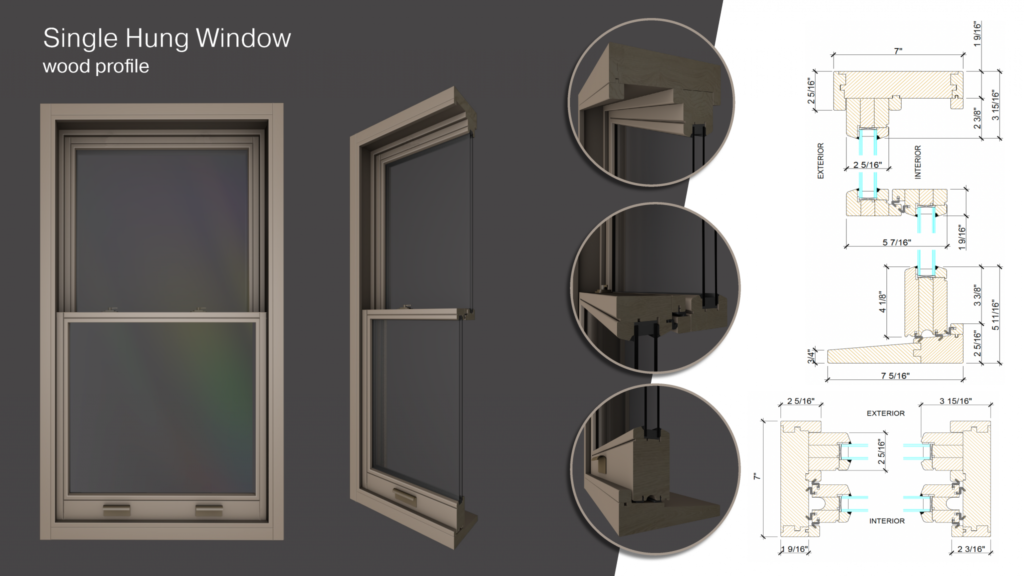
Simulated Double-Hung Window
We developed a combination of traditional-looking windows and technical European style. Because of their construction, simulated-hung windows can actually be more energy-efficient than true double-hung windows. This is because they have more moving parts, which increases the likelihood of air leaks. The sliding sashes allow air to enter or escape, especially if the windows are older and have not been properly maintained or weatherstripped. A huge difference is a sach multipoint locking system where the sash is pressed tightly against the frame along the entire perimeter and does not slide along the guides in the frame. This allows us to achieve the best thermal and sound proofing performance. We use limiters, which ensures safety; all our windows comply with the New York code requirements.
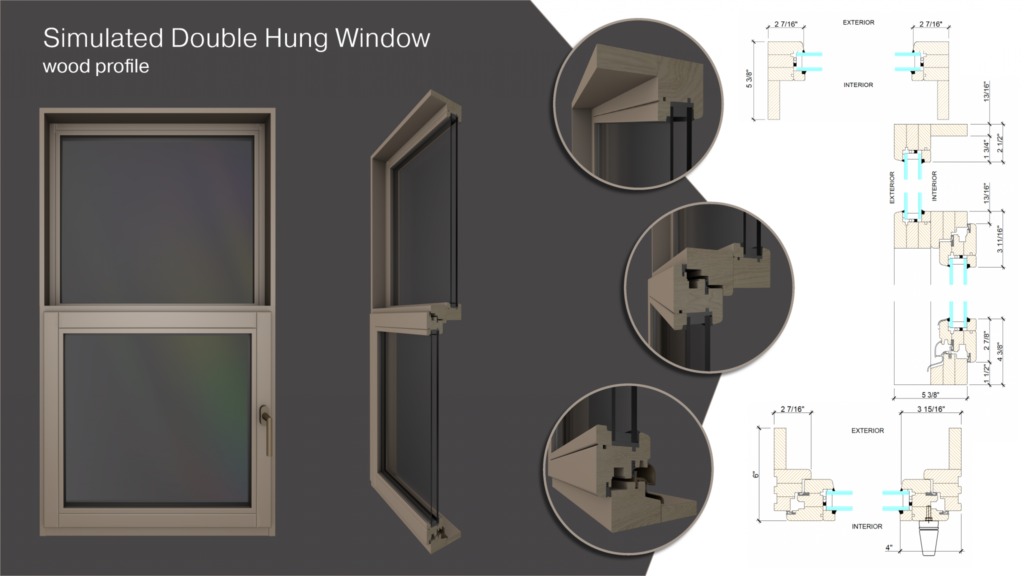
Insect screens are available for any opening types.
The main advantage of using wood for landmark windows is that it can be customized to match the exact measurements of the original window. Firstly, there’s wood, a classic choice with various types such as Scandinavian pine, ash, and oak. Also, we use teak, mahogany, and other exclusively sorted woods.
However, it’s important to understand that a wooden window with glass is always a wise choice.
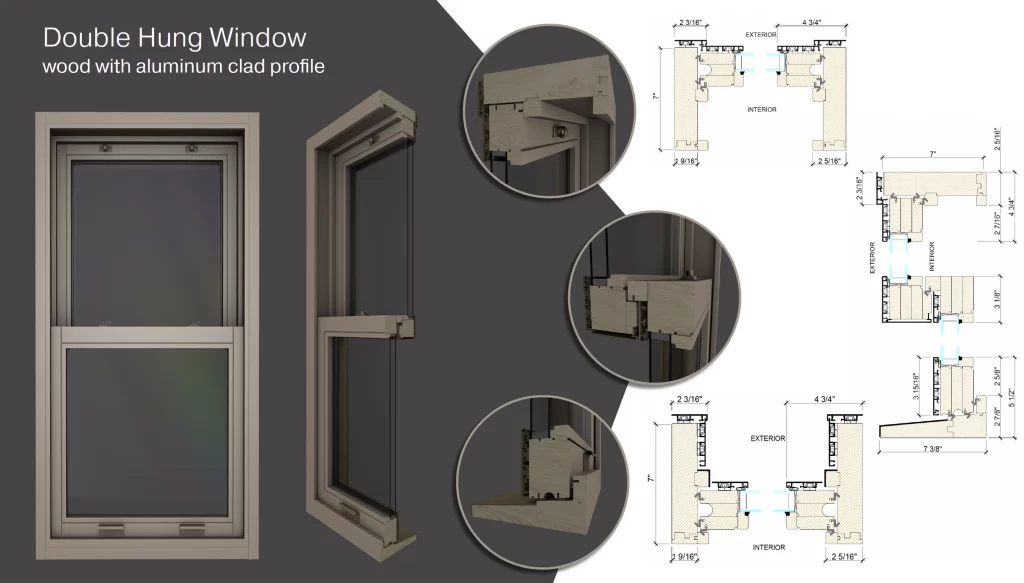
For a more modern look, a combination of wood with metal cladding can provide both coziness in the inside of the house and style on the outside. Seamlessly blending with the architecture, wood-clad metal windows are also resistant to environmental challenges.
You can learn more about this type of windows and the available hardware by downloading the detailed catalog here.
Balances: Balances are mechanisms within the window frame that help counterbalance the weight of the sash, making it easier to open and close the window smoothly. There are various types of balances used in single-hung windows, including block-and-tackle, balances (also known as coil spring balances).
The world of windows can be daunting and overwhelming with technical jargon and many, many different parts to choose from. With this guide, we’re going to introduce you to some of the more common types of window balances, explain how they function and give a brief overview of how to replace them. If there isn’t a direct replacement, as is common, we will discuss newer, modern technology that you can convert your windows to.
Balances: Traditional double-hung windows are counterweighted, using two window balances concealed within the window frame. The weight of the balances help offset the sash’s weight, making it easier to open and close the window.
A window balance (sometimes called a sash balance, window spring, or window “balancer” is a somewhat hidden window component sitting inside the window frame. Window balances are only found in double-hung or single windows and counterbalance the weight of the sash assisting you with opening and closing your windows. Window balances are found in both residential and commercial windows.
There are four common window balances found in residential windows. We’ll introduce them to you from the oldest to the newest.
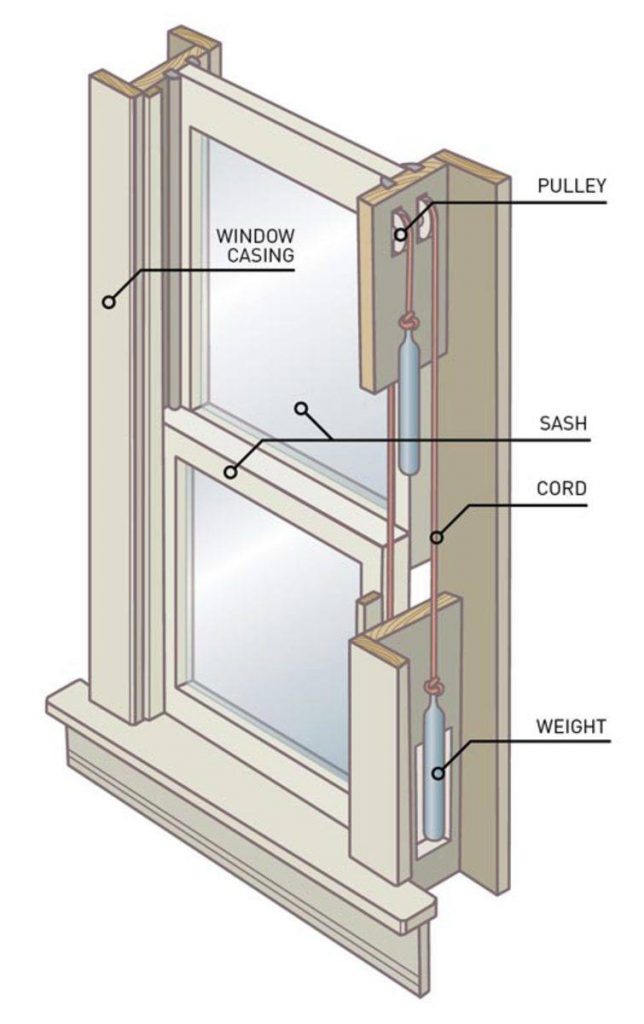
The cord and weight balance system was the first type of balance system installed in sash windows. If your home has older wood windows they may operate with a cord and weight or chain and weight balance system.
Fun Fact: Prior to the invention of this counterbalance system, the operable sash had to be propped open with sticks, hinge systems↗
How do cord and weight window balance systems work?
Windows with cord and weight balance systems have a box built into each side of the window (the jambs) where cast iron or lead weights are suspended. The weights are attached to a cotton cord that extends up the jamb, over a pulley, and onto the operable sash.
In order to counterbalance the weight of the window, the weight in the jambs has to match the weight of the sash. Equal weight creates a perfect balance and allows the window sash to move smoothly.
In order to counterbalance the weight of the window, the weight in the jambs has to match the weight of the sash. Equal weight creates a perfect balance and allows the window sash to move smoothly.
Rope and Pulley Window Balances
This is the original window balance system. This type of window balances uses large weights to counterbalance the sash. These weights are hidden in cavities beyond the jambs. The weights are connected to ropes or chains and travel up and down as the sash is raised or lowered. The most common problem with this type or balance system is that the ropes will fray and break over time. The most common solution to this problem is to simply replace the chains. Depending on your window you may be able to upgrade to a newer balance system.
How do constant force window balances work?
Constant force window balances work by using a stainless steel rolled coil spring. The spring is similar to a tape measure that extends and coils and, like other balance systems, it’s located in a pocket in the jamb. Manufacturers use a computer program to provide the perfect counterbalance for each window based on the window’s dimensions. The window’s dimensions determine the number of coils used in the balance system.
The spring in this system should hold its tension forever, in fact, most windows with this balance offer lifetime parts warranty. This system doesn’t use cords that can wear and tear or parts that can rust.
Coil spring window balances are a type of constant force window balance. These balances work by using stainless steel, coiled spring as a counterbalance. This type of balance system is designed to be more durable and quieter than other balance systems. There are several parts to a coil spring balance system: the coil, the balance spring cover, the balance drum, and the pivot lock shoe. To find replacements for your balances it is best if we have pictures of your current balance system along with your sash weight.
Clock Spring window balances are an older style window balance, often found in older wood windows. This type of balances is similar to the previously mentioned coil spring balances in that they use a coiled metal spring to counter balance the weight of the sash. There are a two ways these balances can be mounted in your jamb, overhead or side mounted.
6 Jambs: The jambs are the vertical parts of the window frame that help hold the sashes in place when the window is closed. They play a vital role in providing a secure seal to prevent drafts, water infiltration, and noise from entering the building.
9 Locks and Latches: Single-hung windows come with locks or latches that secure the window when it is closed. These locks are essential for ensuring the window remains shut and also provide an added layer of security to the building.
Sash locks are mechanisms located at the meeting rail that secure the two sashes together when the window is closed. They ensure a tight seal and improve security by preventing unauthorized access from the outside.
In modern double-hung windows, jamb liners are often used instead of traditional window balances. Jamb liners contain the window balances to aid in the smooth movement of the sashes.
Understanding the various parts of double-hung windows not only enriches your knowledge of architecture but also empowers you to make informed decisions when maintaining, repairing, or replacing these windows.
Whether you are preserving the historic charm of an old home or seeking to enhance the beauty of a new one, double-hung windows offer timeless elegance and functionality that continues to withstand the test of time.
Still have questions about double-hung windows? Contact the OpenAWD Team! We’ve got experts ready to give you answers.